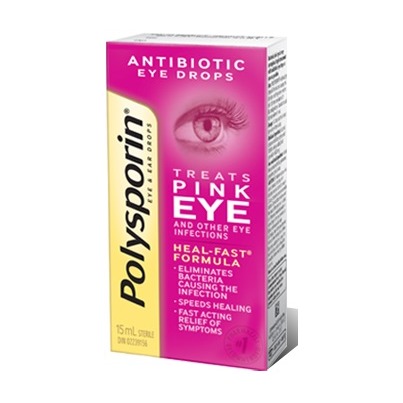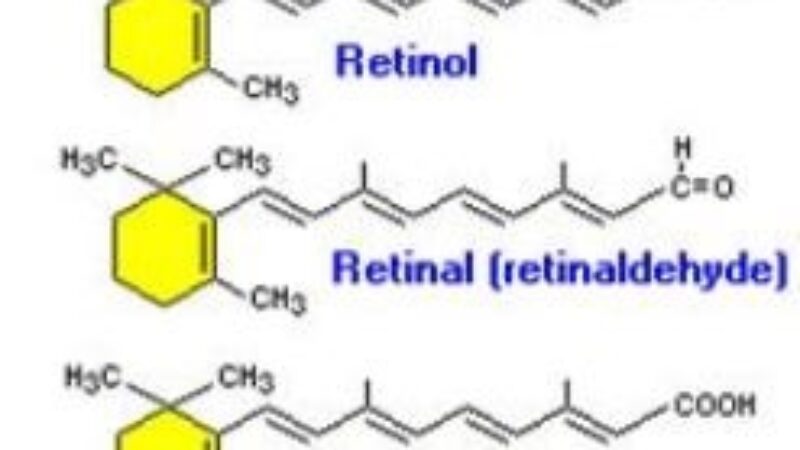Polysporin Antibiotic Eye Drops treats pink eye, one of the most common disorders of the eye. Pink eye is also known as conjunctivitis and can be caused by an allergy, bacteria or a virus. Polysporin Antibiotic Eye Drops’ “heal fast” formula treats pink eye and other eye infections.
Now available in a new easy-squeeze bottle, Polysporin treatment eliminates the bacteria causing the infection, speeds healing and offers fast acting relief of symptoms.
Signs of infection can include:
- Redness in the white of the eye.
- Watery eyes.
- Itchiness or a feeling of having sand in the eye.
- A discharge that tends to be clear when caused by an allergy, or thick and yellow-white when caused by a bacteria.
A viral infection may be accompanied by a sore throat and/or a tender node in front of the ear. The discharge also tends to be more watery than sticky. An allergic infection may be accompanied by swollen eyes and other symptoms of allergy, such as a runny nose. It also often occurs during the typical allergy seasons (spring and fall).
Note: Pink eye does not usually affect vision or cause pain. In the case of either of these symptoms, contact a doctor immediately.
To prevent the spread of pink eye:
- Wash hands frequently with soap and water or use an antibacterial sanitizing hand gel.
- Avoid touching eyes.
- Don’t share towels or washcloths.
- Wash towels and facecloths in hot water.
Polysporin Antibiotic Drops are suitable for all ages. Apply 1 to 2 drops in infected eye 4 times a day, for 7 to 10 days. Avoid contact with the tip of the dropper to prevent contamination of the solution. If irritation occurs, in the event of serious infection or if infection has not started to clear in 2 days, discontinue use and consult a doctor. Consult doctor before use if the cause of the pink eye is unclear, or if there is a marked sensation of something in the eye, sensitivity to light, continuous, abundant discharge, pain in the eye, impaired vision or fever.



